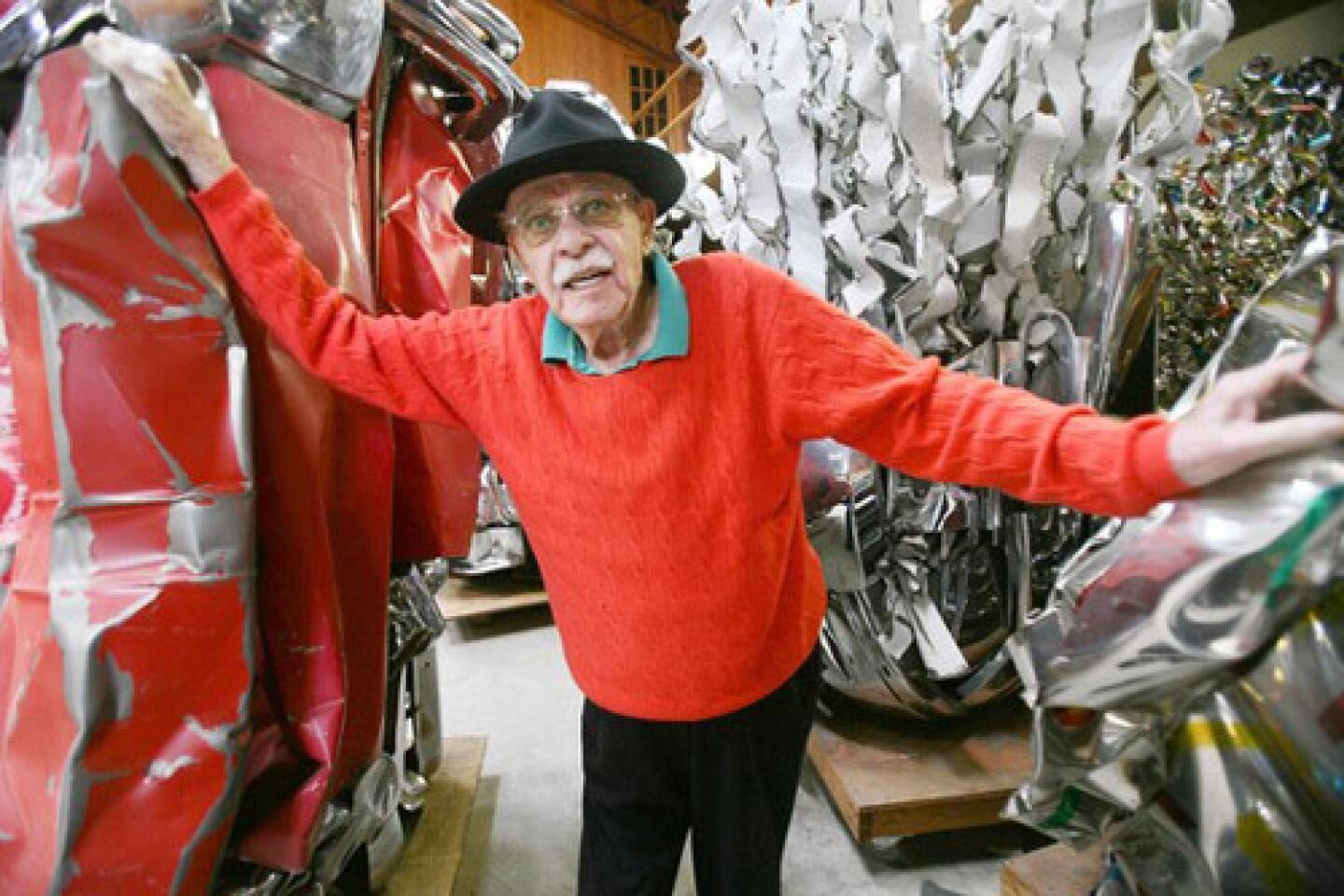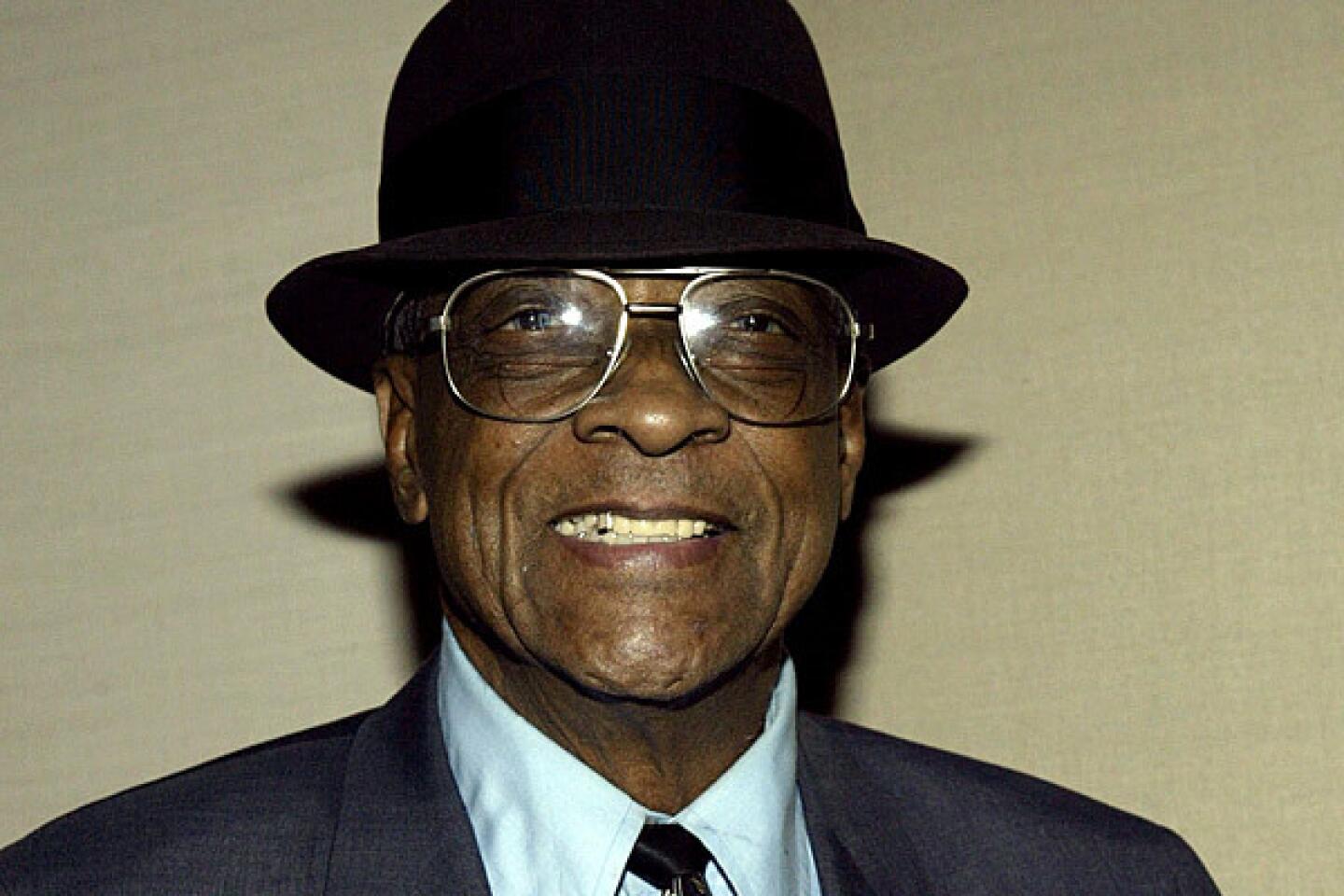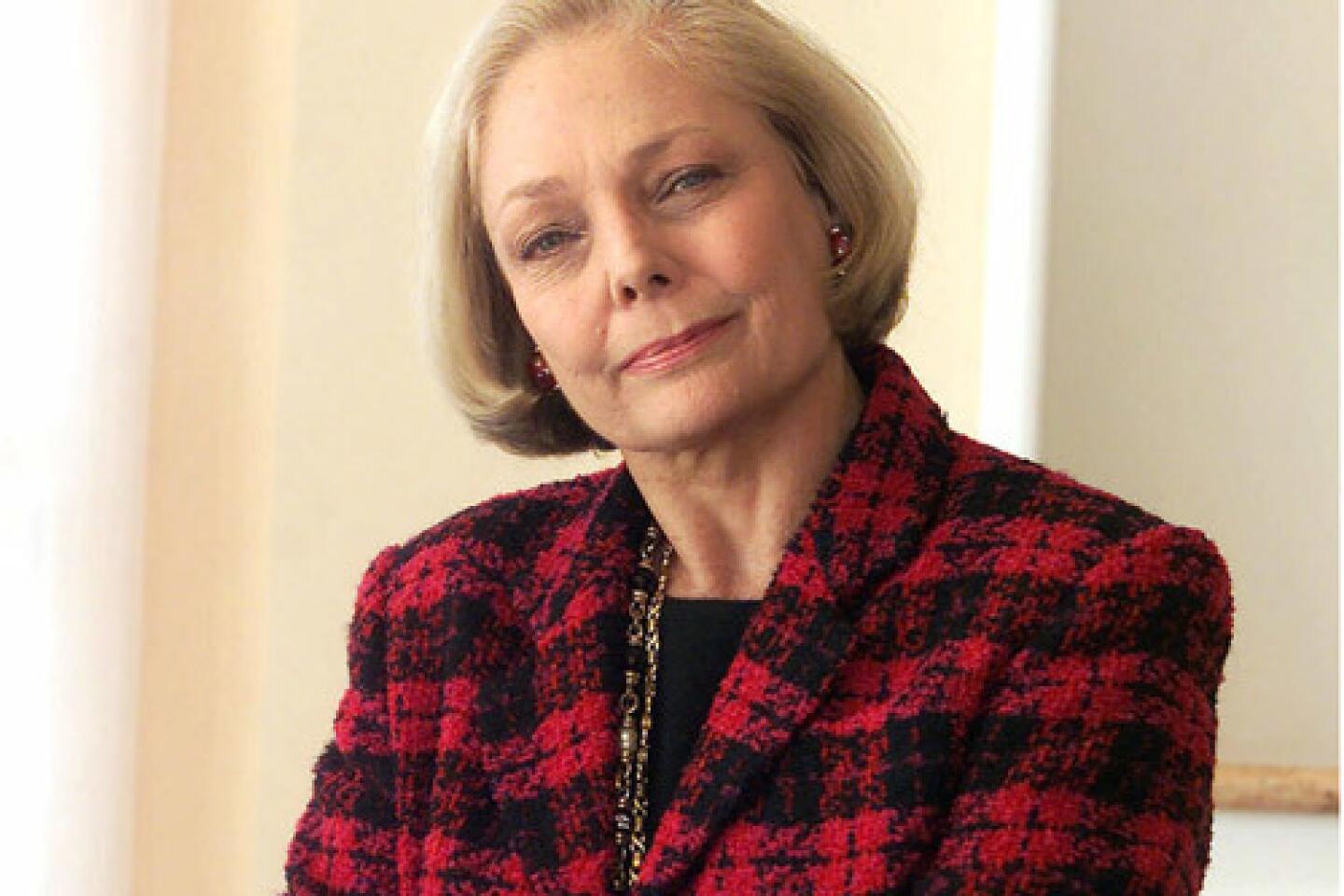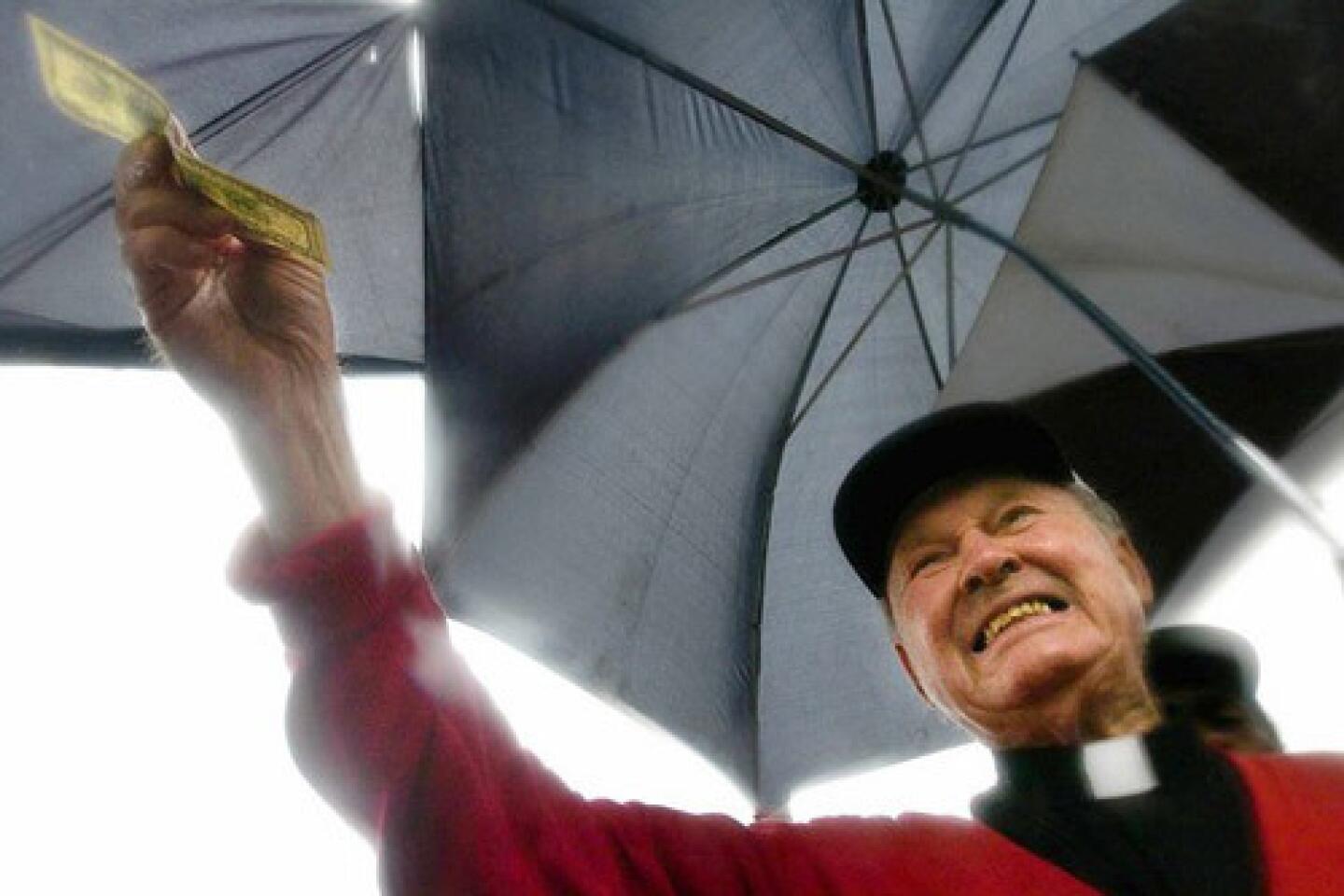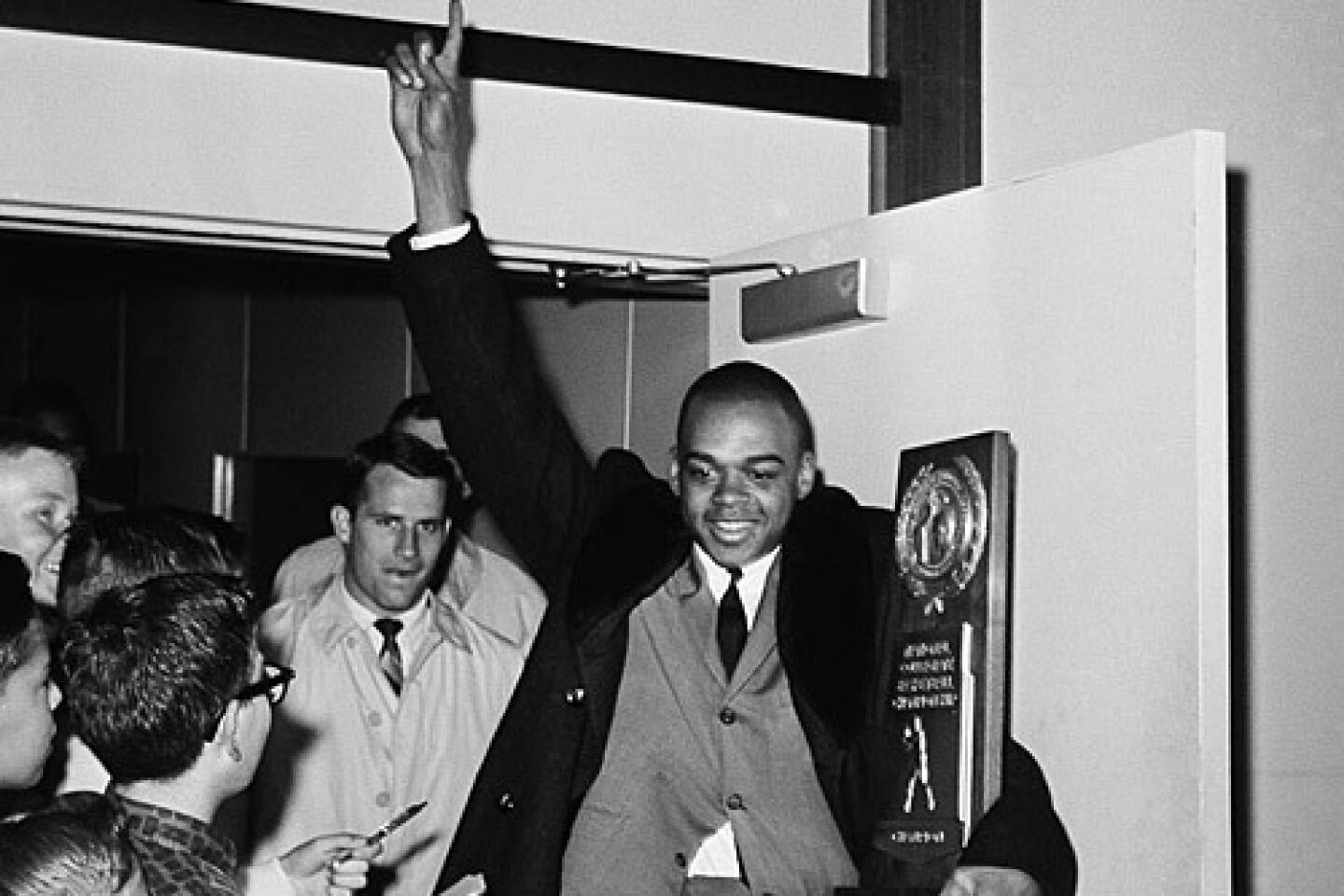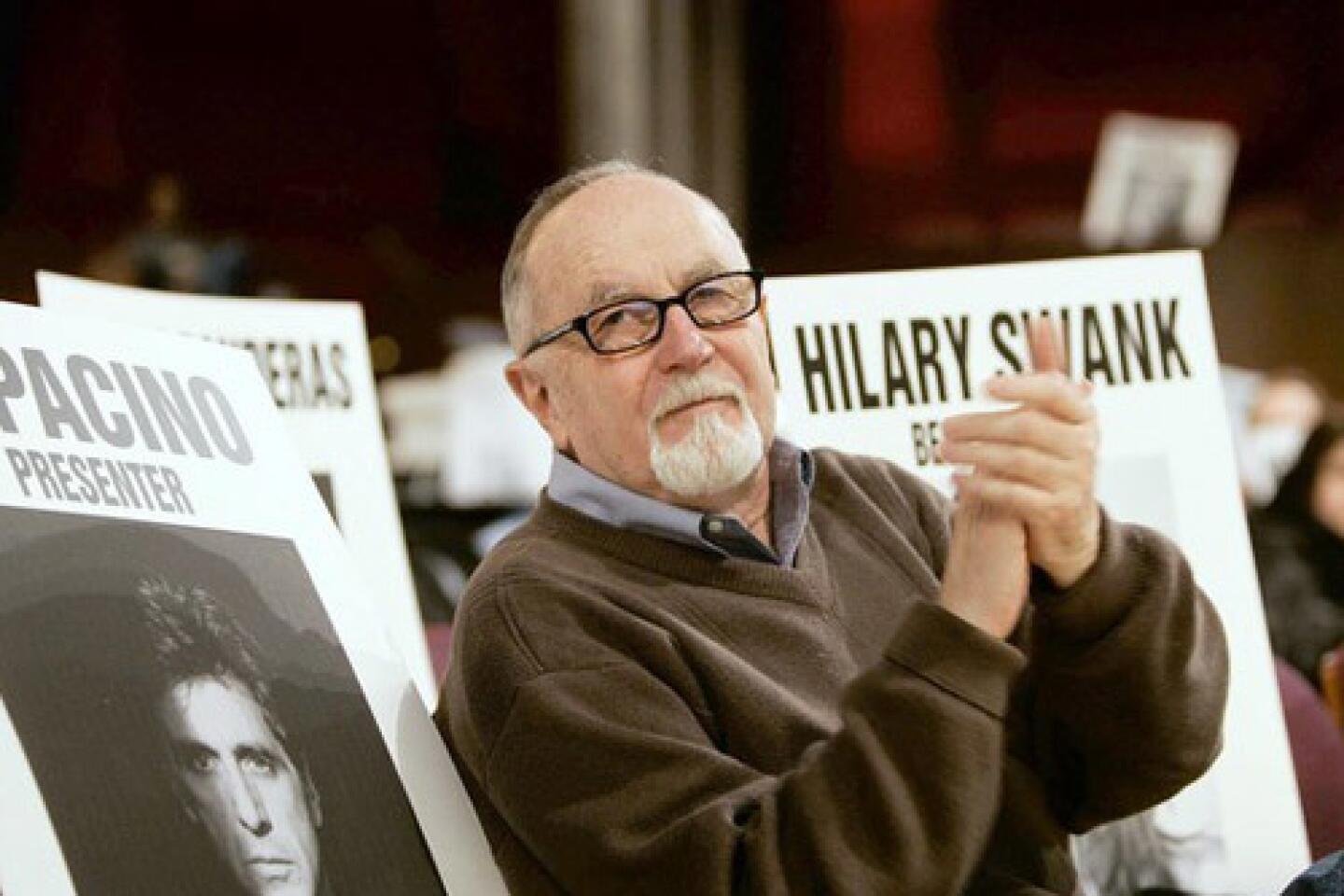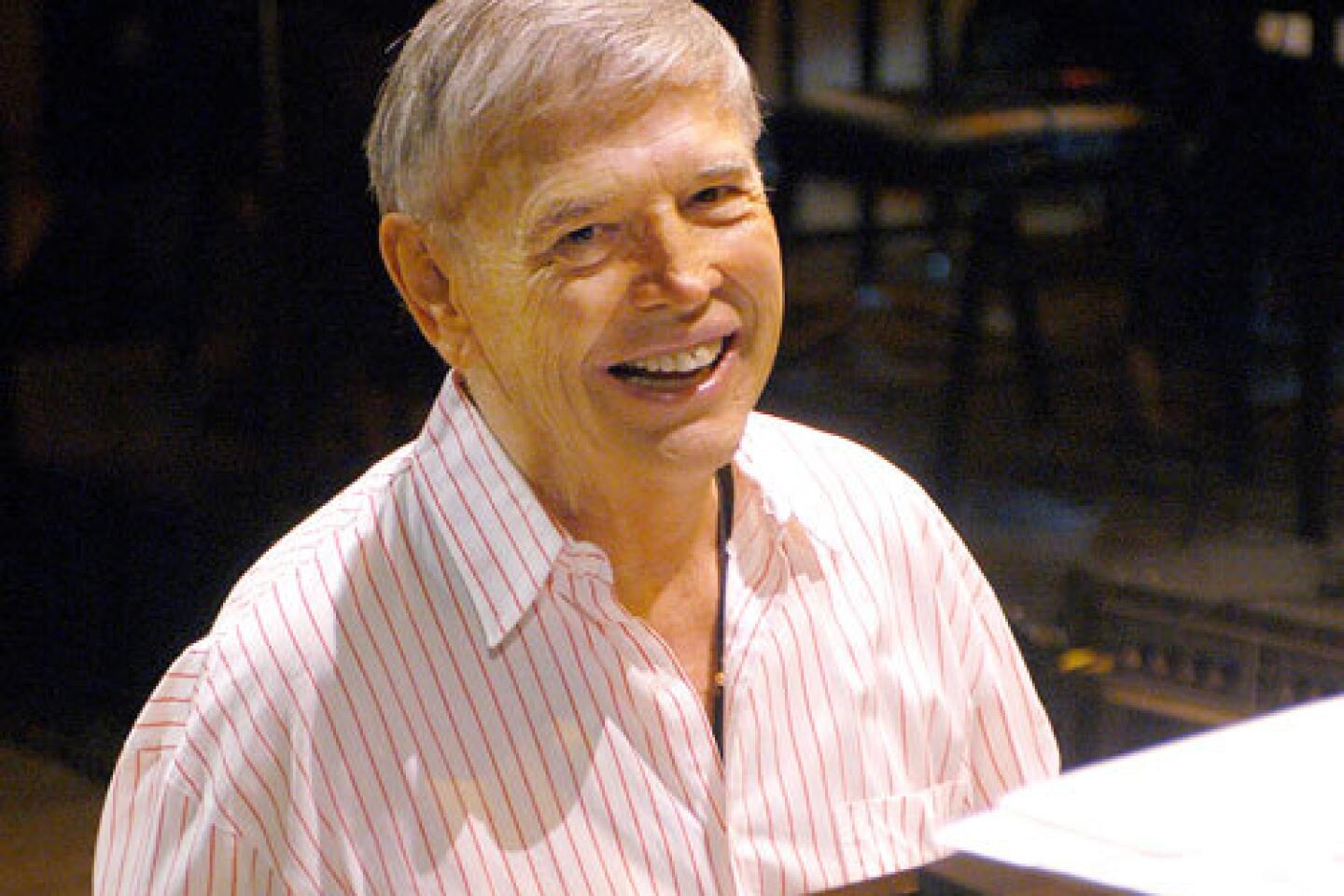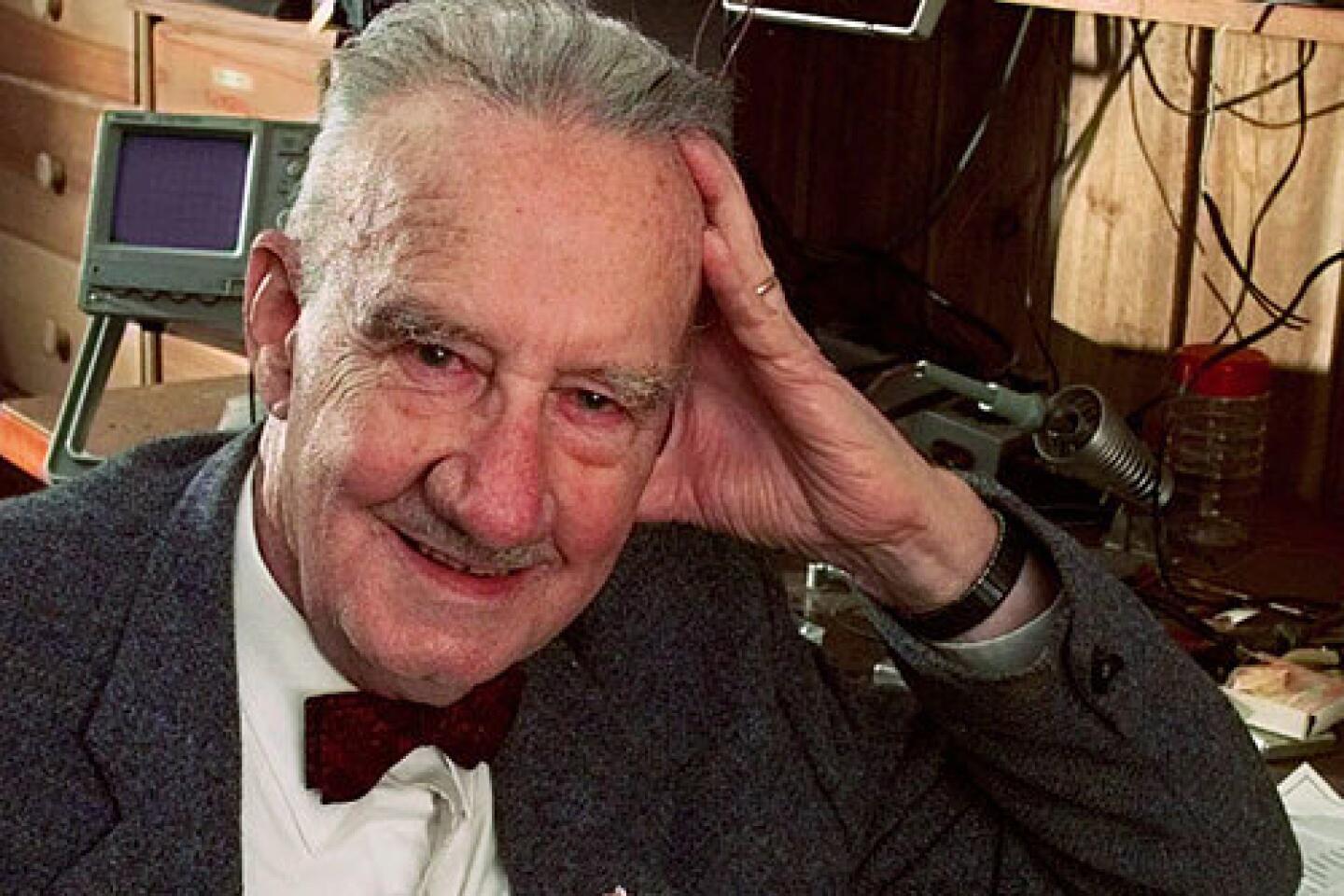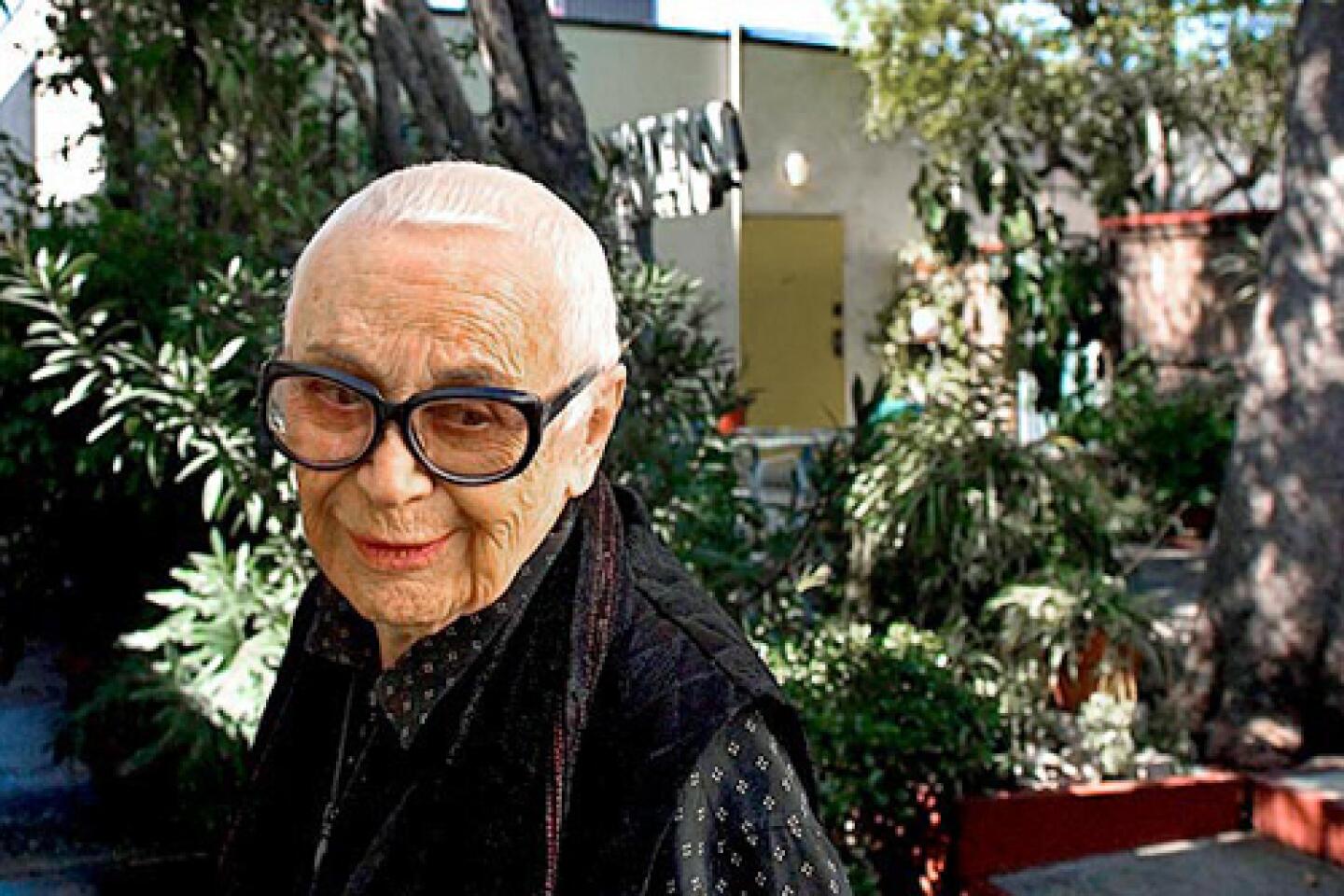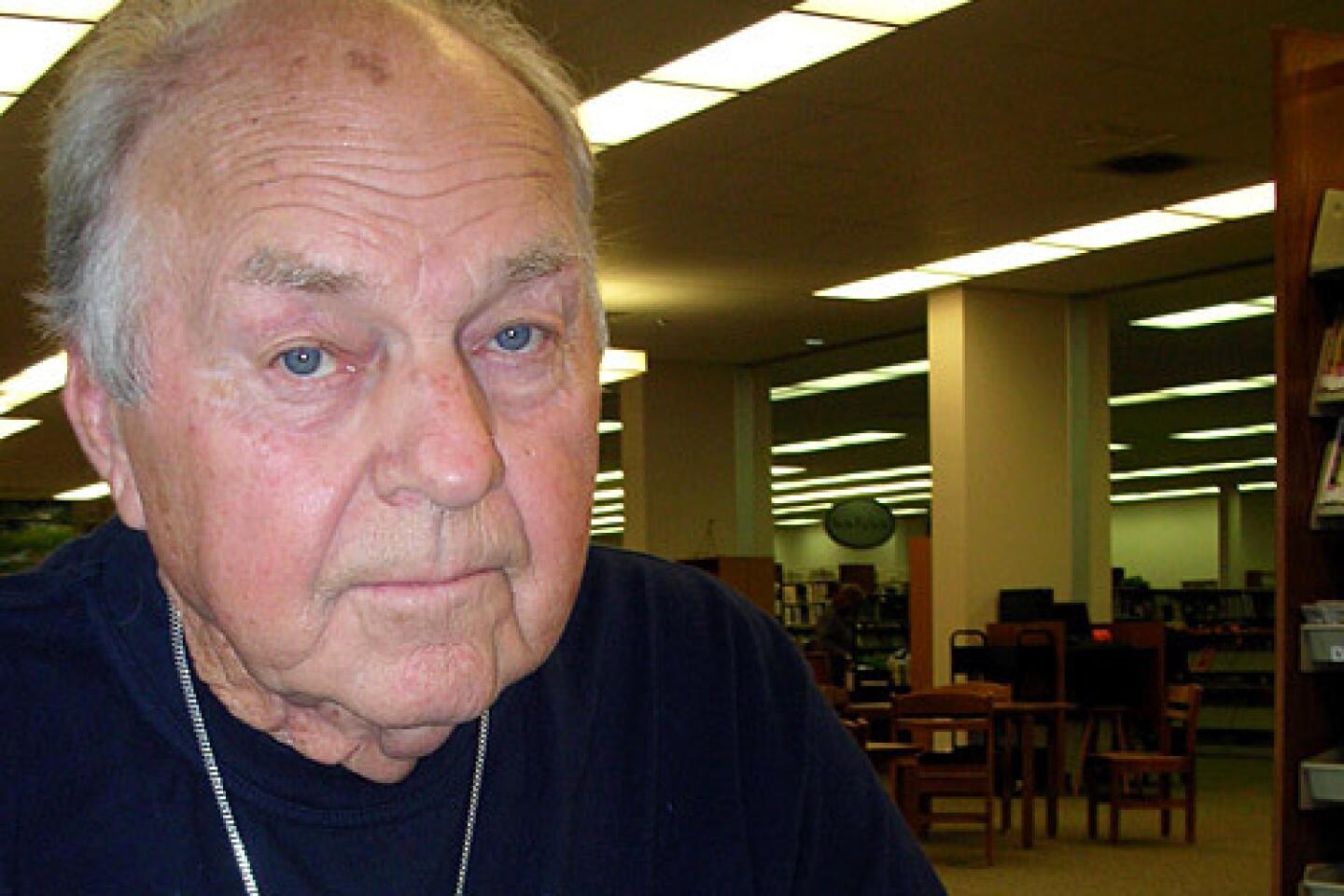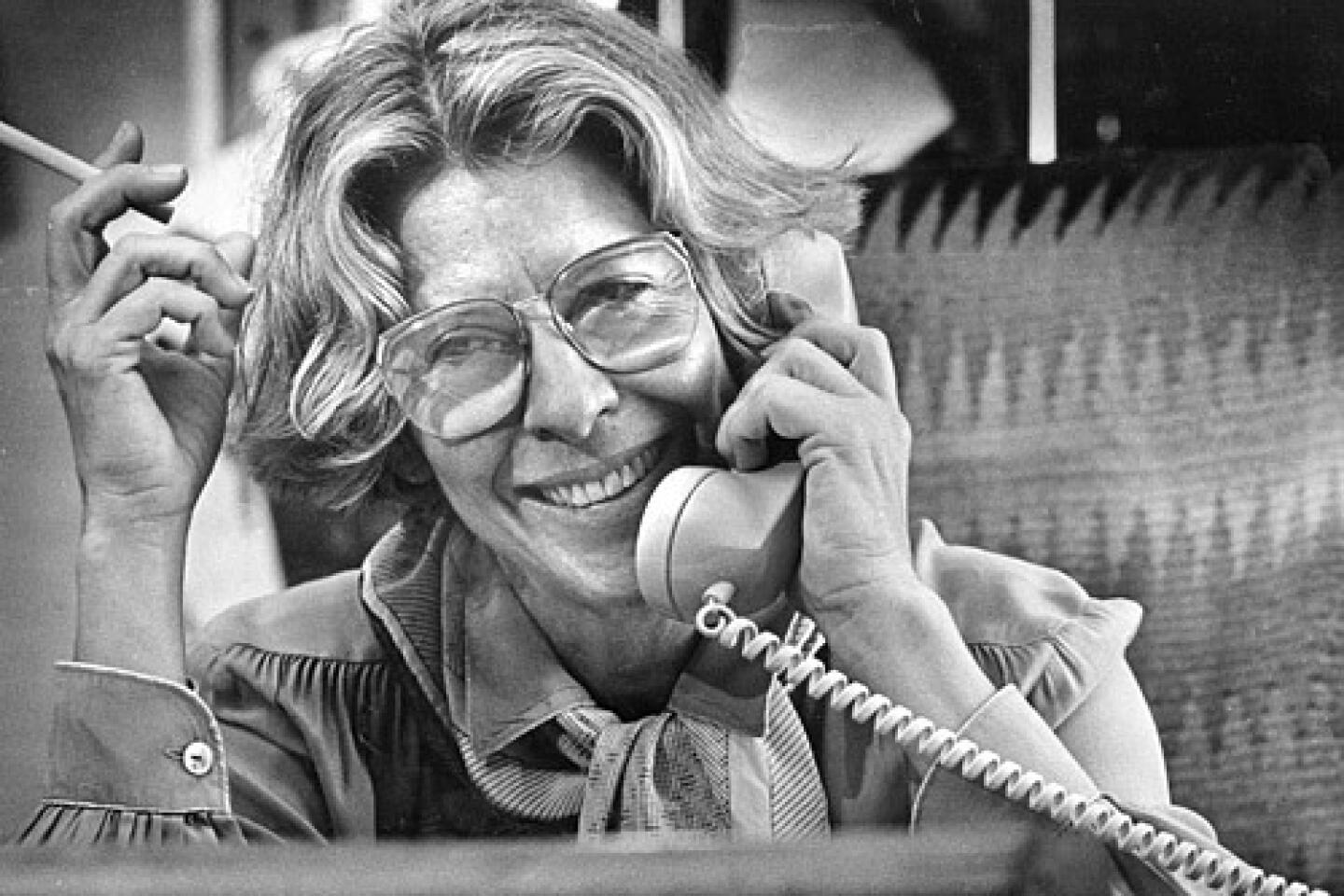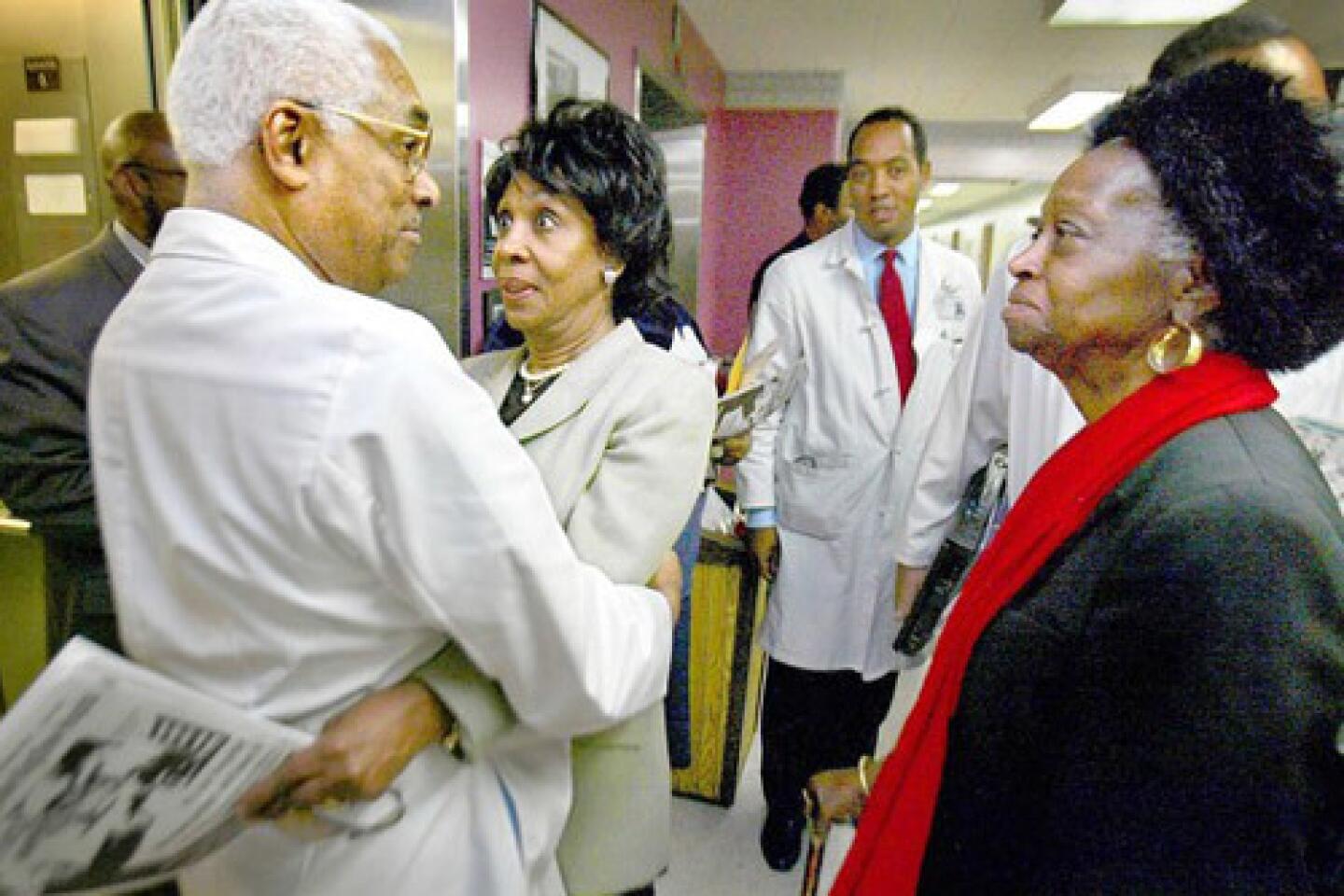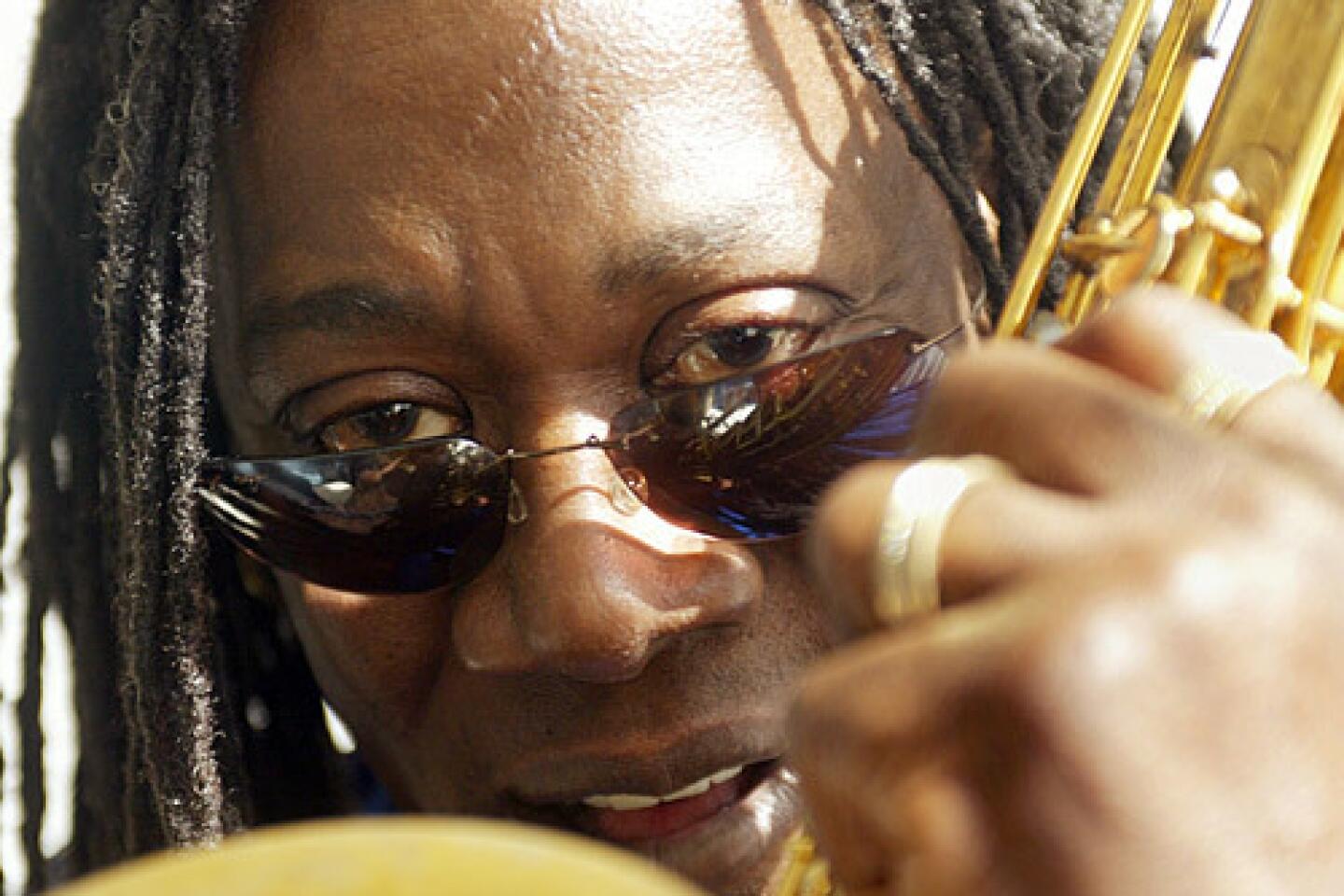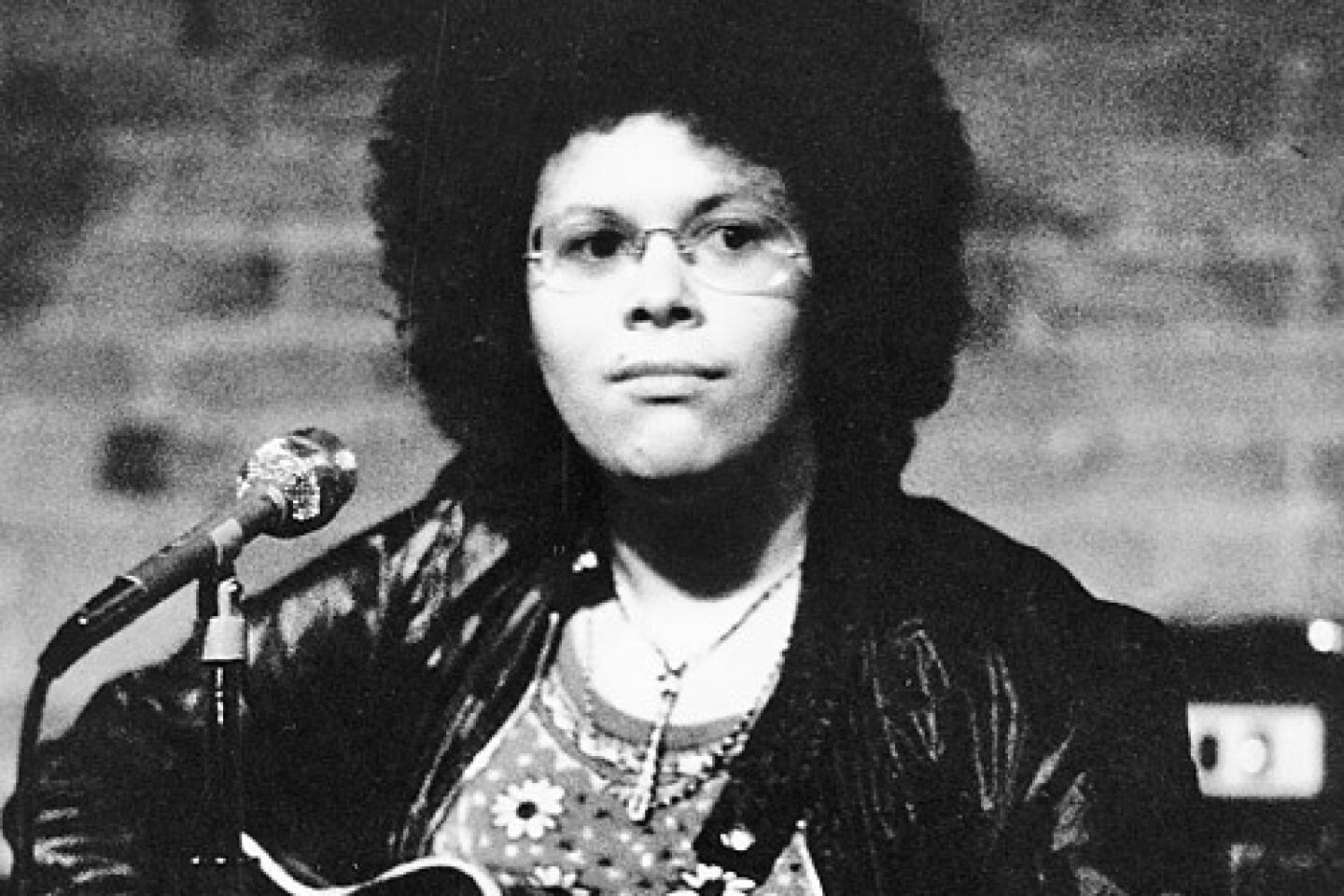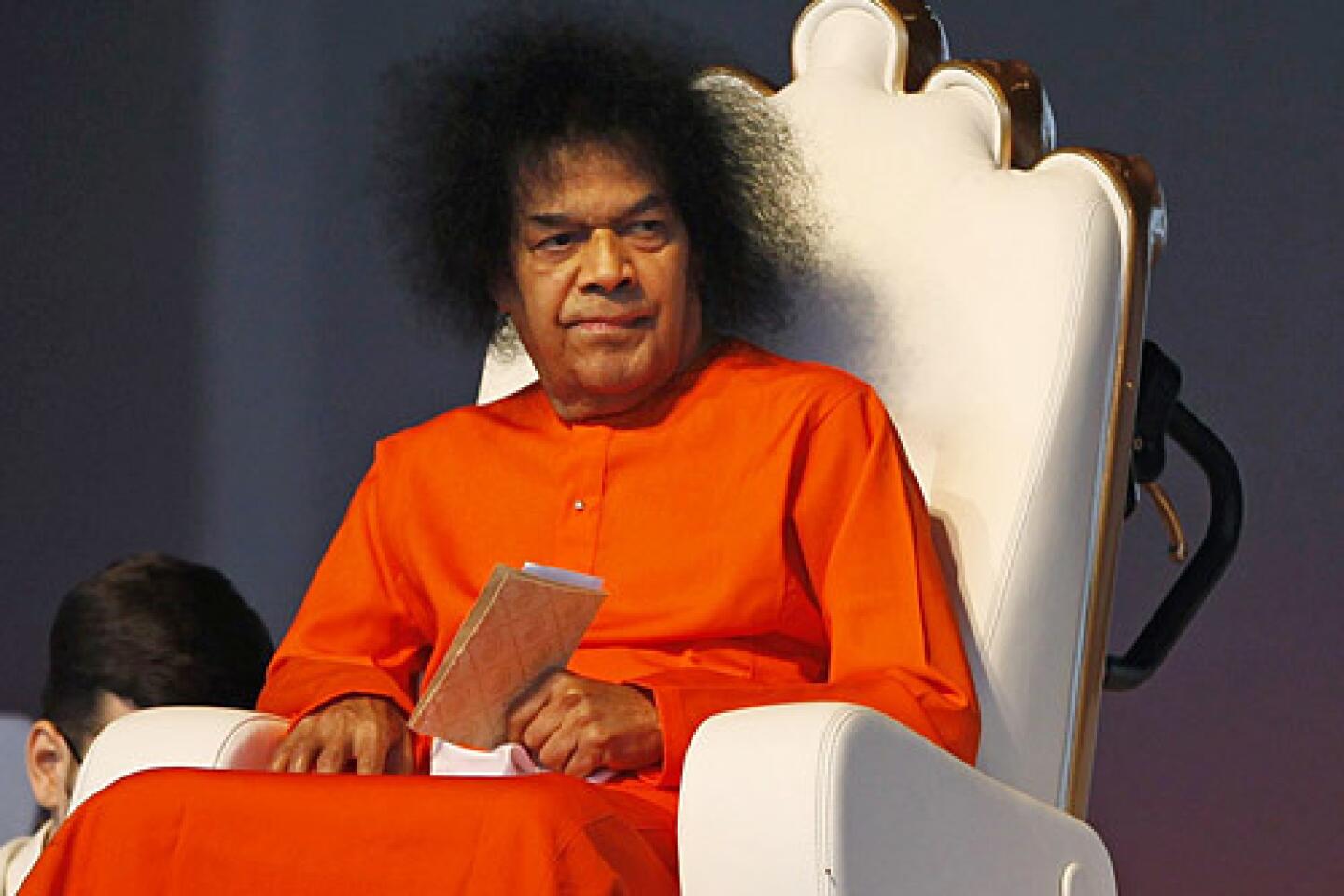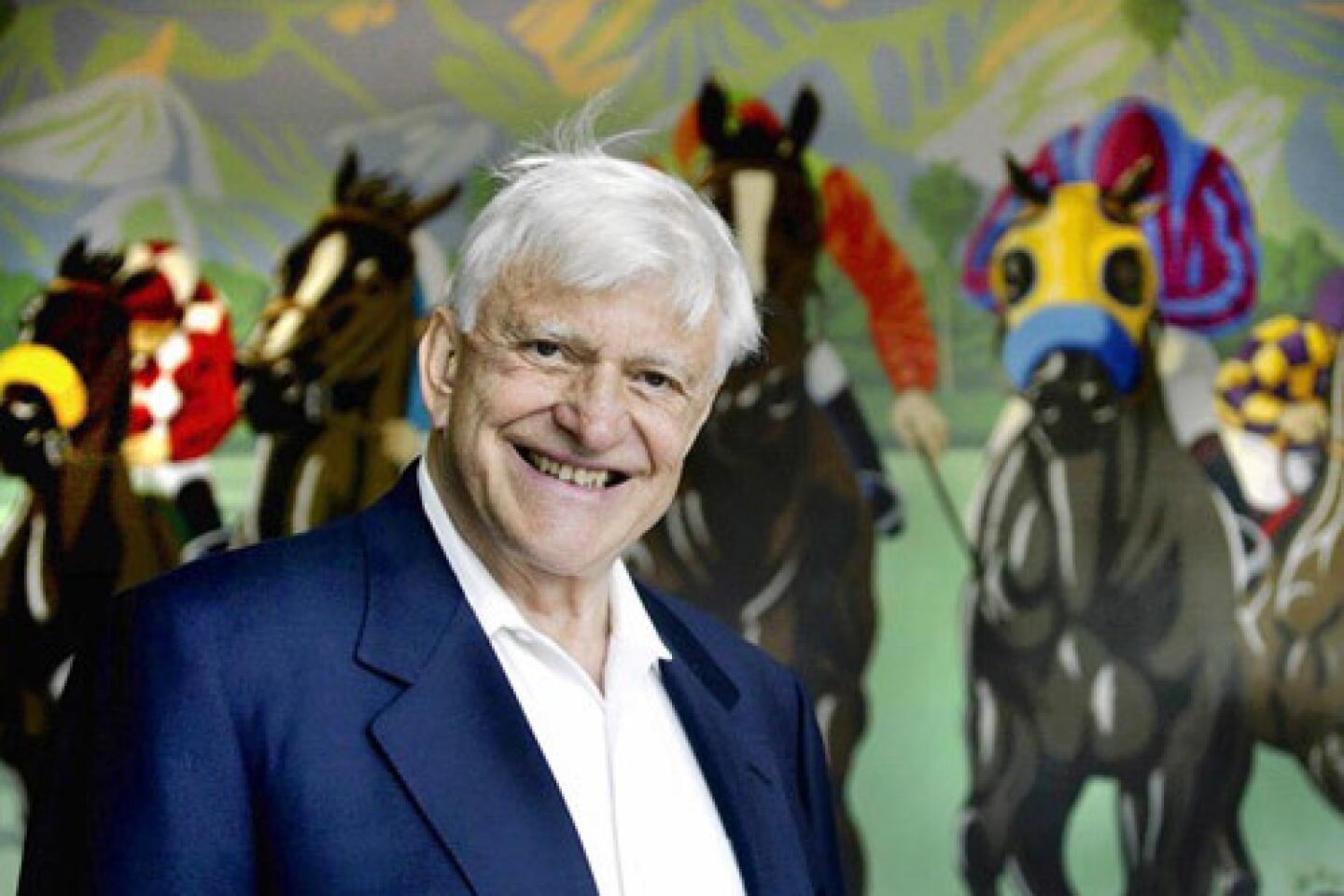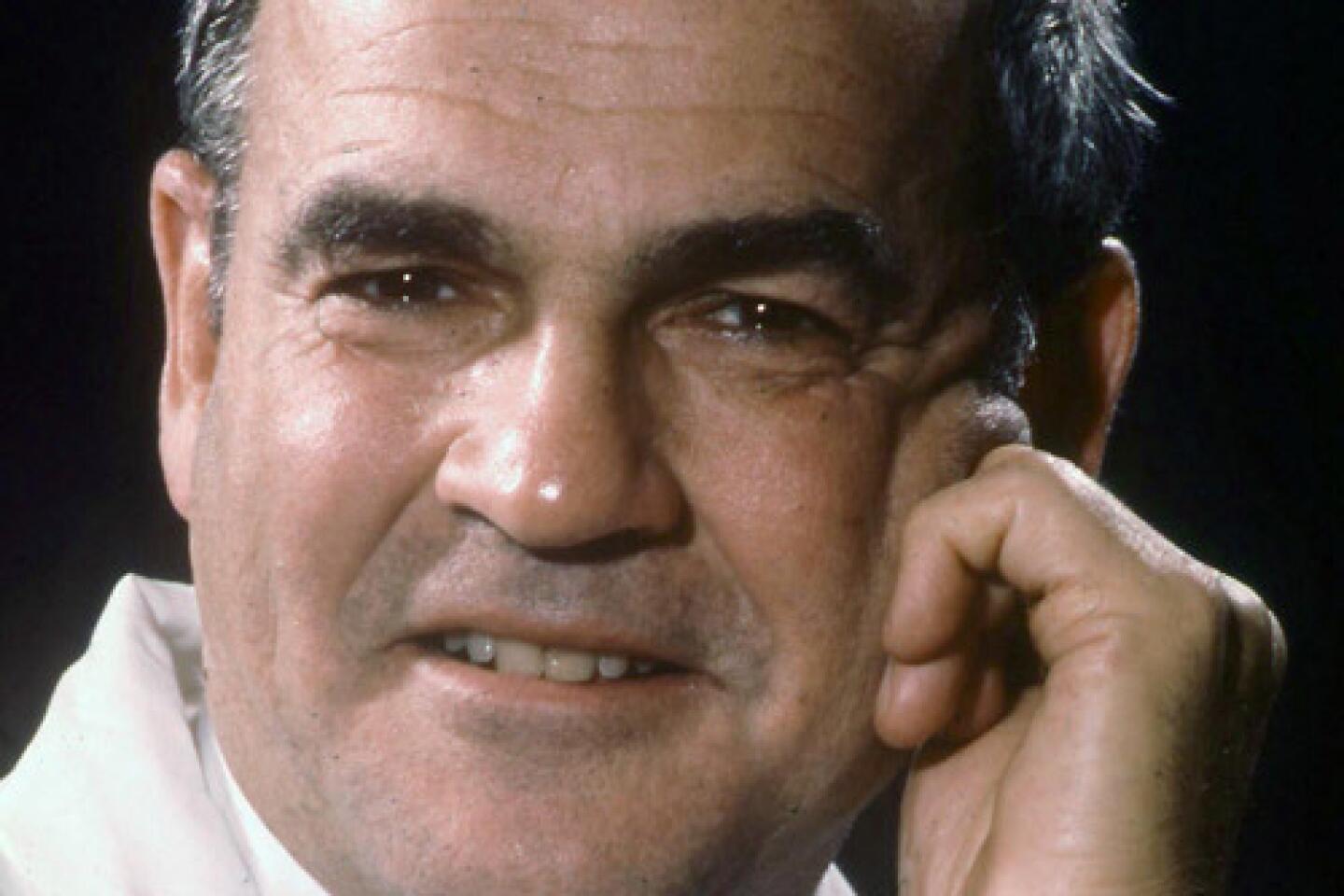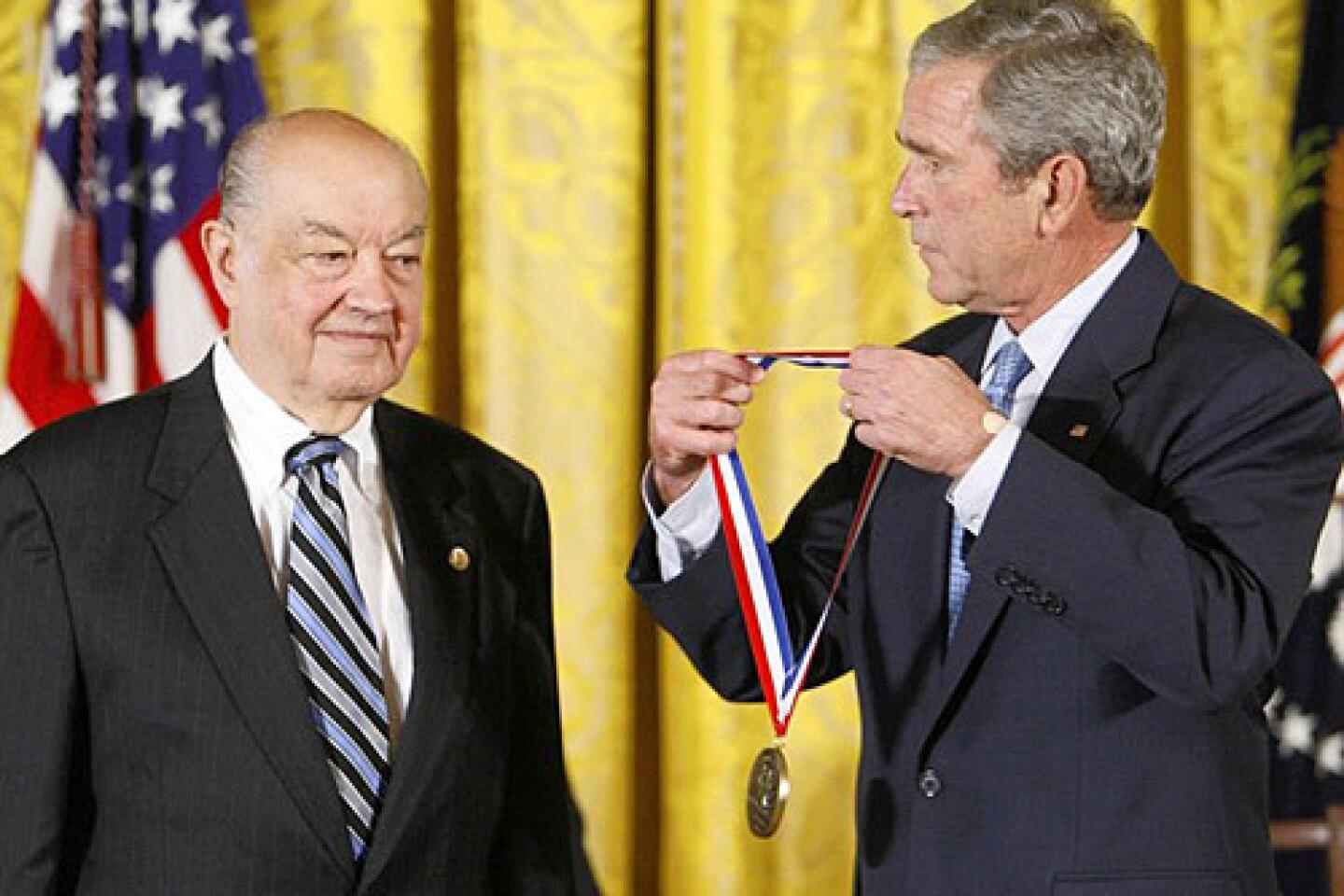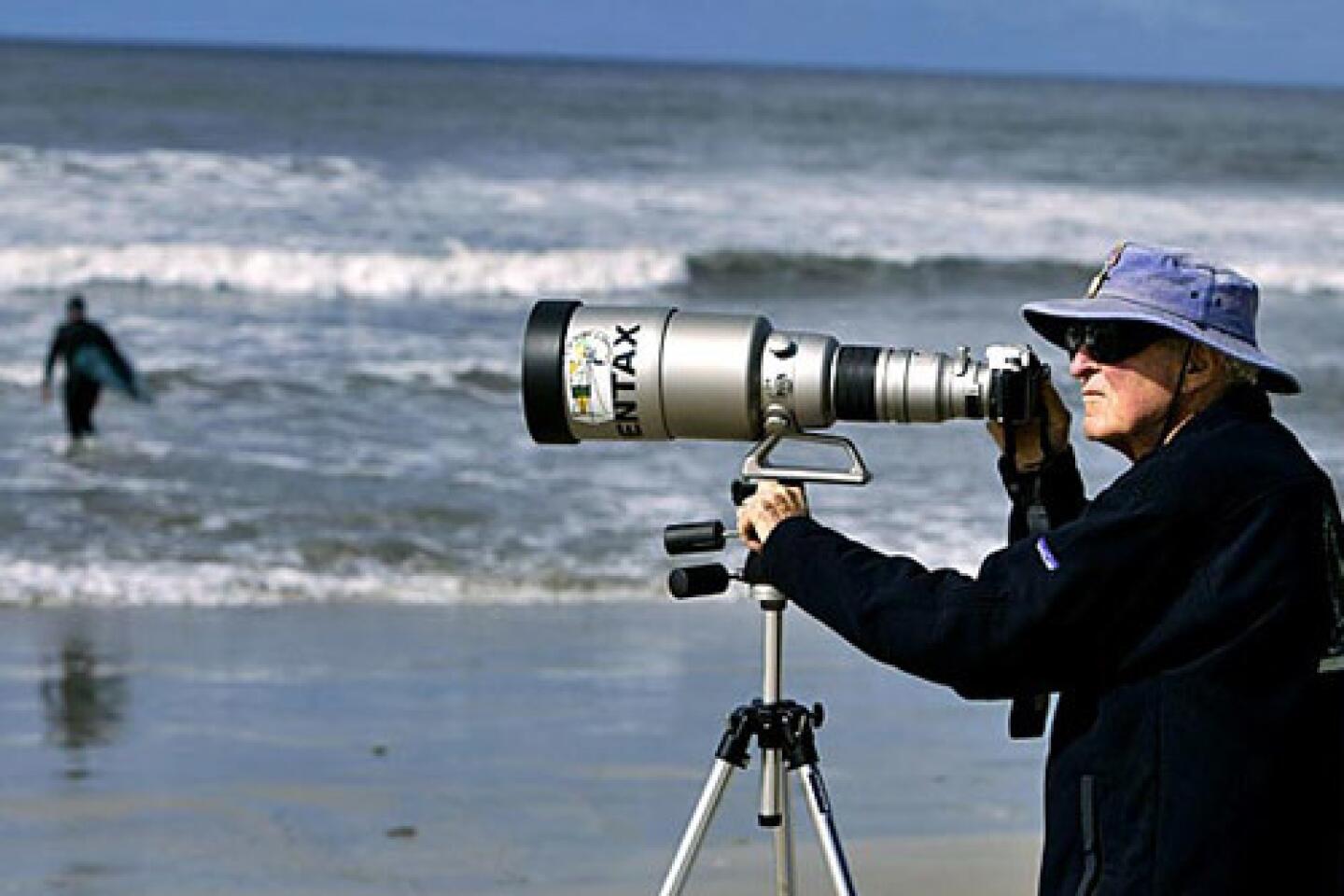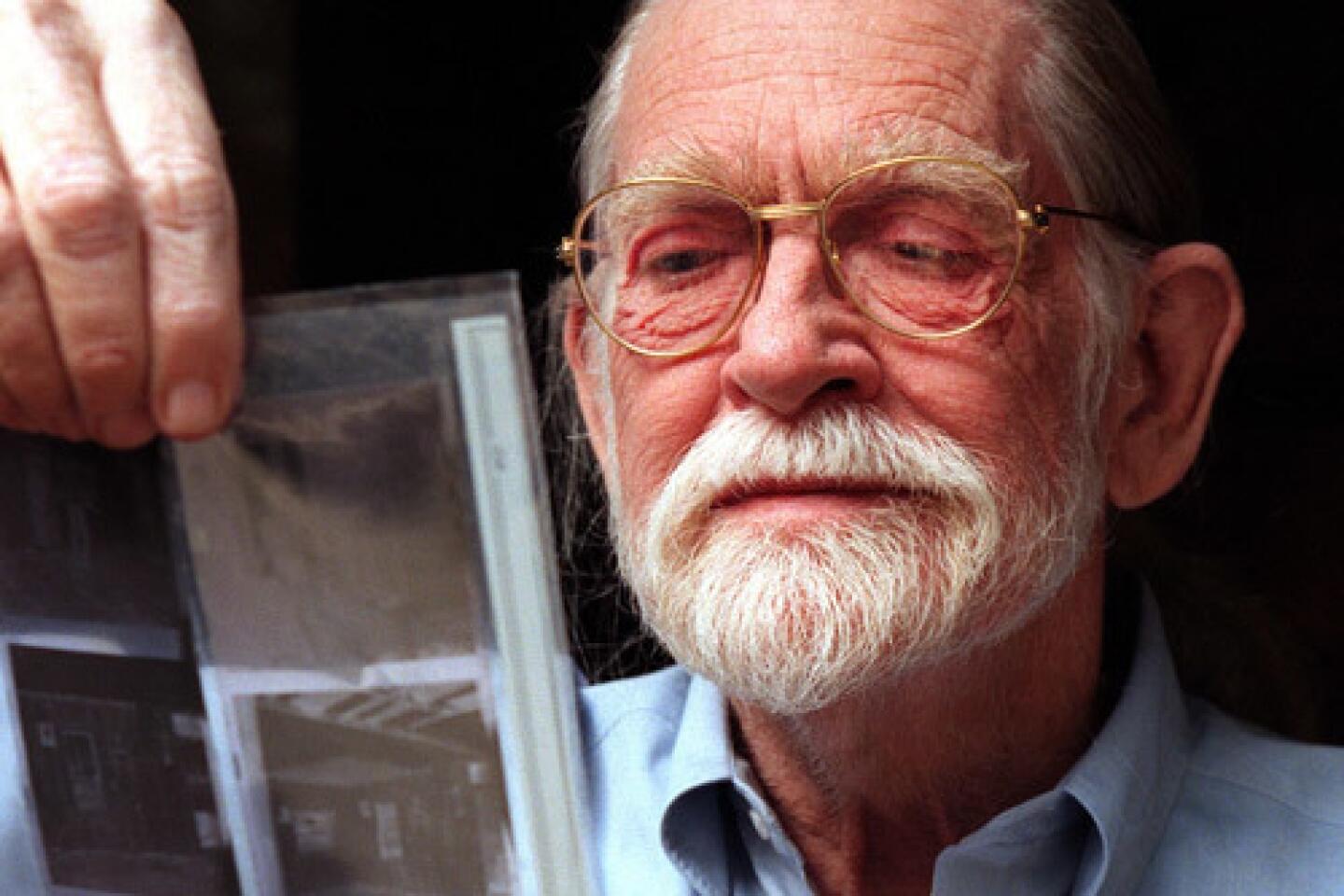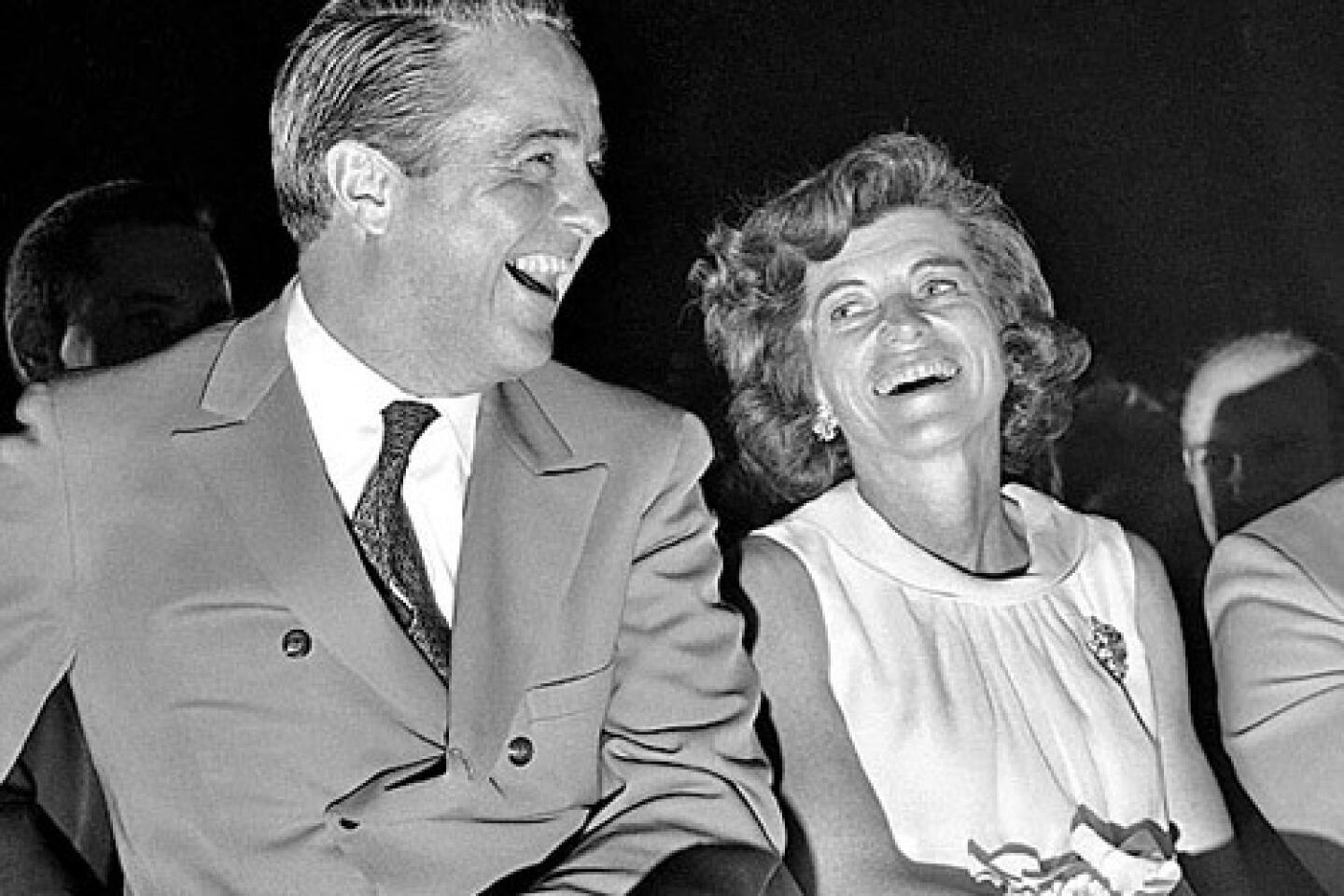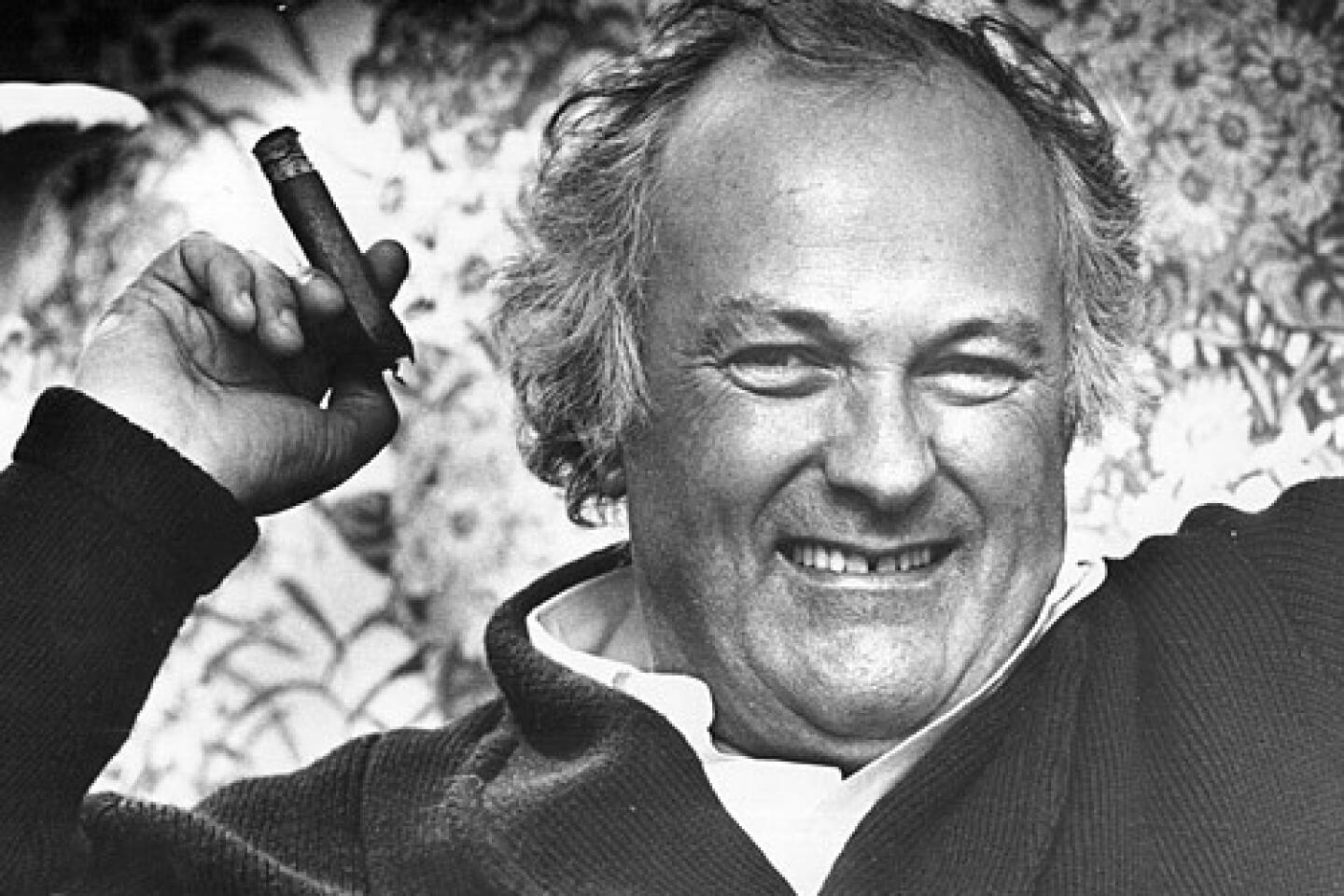Jerry Dimitman dies at 91; professor grew prized Asian fruit
- Share via
Jerry Dimitman, a retired professor of plant pathology at Cal Poly Pomona who regularly caused an uproar when he showed up to sell his exotic fruit at the Alhambra farmers market, died Dec. 14 of a stroke at his home overlooking the San Gabriel Valley. He was 91.
Such was the mystique that he cultivated, along with some of the state’s oldest, largest and rarest exotic Asian fruit trees, that he and his family always insisted that his home’s location remain unspecified to deter intrusions by overzealous fruit lovers.
Many of his crops, such as lychees, longans, pummelos and mandarins, are available commercially, often from imports, but Dimitman offered ultrafresh, locally grown fruits at a modest price. Some were special varieties cherished in Asia but unknown or rare here, such as his huge, pear-shaped Wong and Chong pummelos, aromatic ponkan mandarins, and wampees, from a citrus relative with small, tan, tangy fruits. Eventually he and his children sought the assistance of Chinese friends who helped to conduct farmers market sales and maintain order among the long lines of customers who feared that he would sell out.
“He loved the Chinese people, he loved the fruit he was selling, and he loved that they loved what he was selling,” said his fourth wife, Emma Urueta-Ruiz of Fallbrook, where they planted a second orchard together.
His son Robert, who lived with him at the original grove, said he intends to continue selling his father’s fruits at the Alhambra farmers market, including his prized pummelos on the Sundays leading up to Chinese New Year on Jan. 23.
Dimitman bought his property in 1953, after carefully investigating the suitability of its microclimate for growing Asian fruits. In addition to tending the grove with great skill, he often waited decades for slow-growing exotic trees to mature into majestic specimens loaded with fruit. Just as important, he established close connections with members of his area’s Asian American community, who gave him some of his prized varieties, and by whom he was regarded with something close to reverence.
Jerome Eugene Dimitman was born Sept. 24, 1920, in New York City to Isaac Irving Dimitman, a dry cleaner and artist, and the former Rose Moss, a masseuse. As a child, he enjoyed tending plants on the balcony of his family’s apartment.
In 1938 he moved to Southern California after his mother’s sister, who lived in Hollywood, won money in a lottery. He worked in orchards in Hemet and attended Los Angeles City College, where he met his future wife, Priscilla Wheat, in 1939. They married in 1944, and had three children, Steven of Chatsworth, Susan Purdy of Santa Monica, and Robert, all of whom survive him. His first wife died in 1971.
He is also survived by his sister, Elaine Hemley of Seattle, and Urueta-Ruiz, whom he married in 1985.
In World War II Dimitman enlisted in the Navy and commanded tenders in the Pacific, where he became fascinated with the culture, and particularly the fruits, of Eastern Asia.
He earned a bachelor’s degree in botany from UC Berkeley in 1943, a master’s from the school in 1949 and a doctorate in plant pathology and biochemistry from UC Riverside in 1958. In 1949 he began teaching at the Voorhis Unit of California Polytechnic College in San Dimas, which later became Cal Poly Pomona.
Dimitman was chairman of the school’s department of biological sciences for 12 years. He occasionally affected a gruff persona but was known as an engaging teacher and mentor. He retired in 1983 but continued to teach until 1990.
He spent many years abroad as a consultant in plant pathology and education in Greece, Guatemala, Yemen and other countries, where he became known for his habit of suddenly driving his car off the road to investigate plants that caught his eye. From 1987 to 2009 he also evaluated scientific projects for the California Citrus Research Board, which named a Riverside facility the Jerry Dimitman Laboratory in 2010.
He took great joy in growing and selling fruit sought by Asian Americans but that no one else in the area offered, especially the Chong and Wong pummelos, named after his late friends Chong Lew and Ben Wong; the Sutter pummelo, small but very juicy, which he said was brought to the California gold fields by Chinese miners in the 1860s; and the Sarawak pummelo, which has juicy green flesh with an intense lemon-lime flavor.
One variety, which he long sought, eluded but continued to inspire him. He named his hilltop orchard Kwa Luk Gardens, after the Hanging Green lychee, which in imperial China was legendary for its flavor and fragrance, reserved exclusively for the emperor and his court, and protected against thieves by multiple fences and nets.
More to Read
Start your day right
Sign up for Essential California for the L.A. Times biggest news, features and recommendations in your inbox six days a week.
You may occasionally receive promotional content from the Los Angeles Times.
